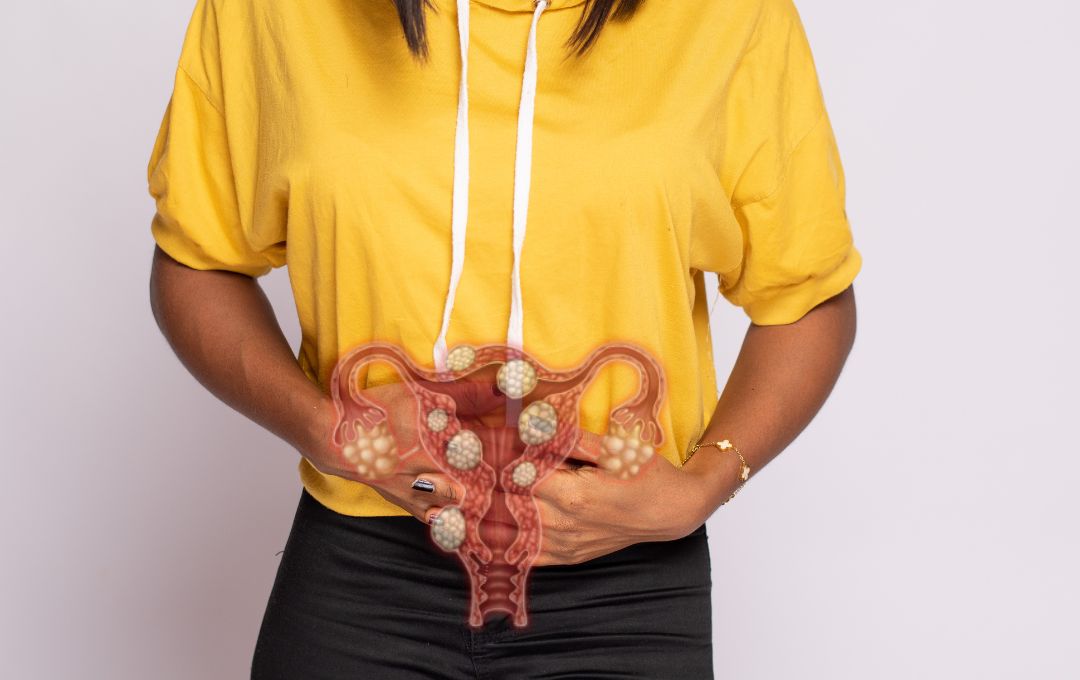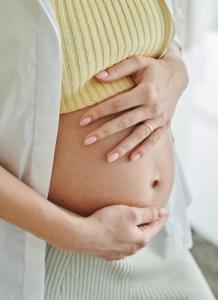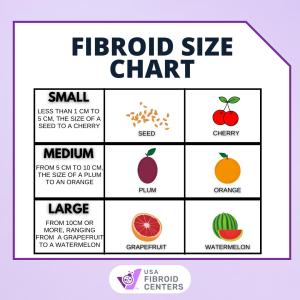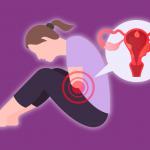
Topics Covered:
- What Are Large Fibroids?
- Symptoms of Large Fibroids
- What Is UFE and How Does It Work?
- Does UFE Work on Large Fibroids?
- UFE vs. Myomectomies or Hysterectomies
Uterine fibroid embolization (UFE) is a minimally invasive procedure that can be used to treat large fibroids. During UFE, small particles are injected into the arteries that supply blood to the fibroids. This blocks the blood supply to the fibroids, causing them to shrink or disappear. UFE is a safe and effective treatment for large fibroids that can be performed on an outpatient basis.
Some of the benefits of UFE for large fibroids include:
- As a minimally invasive procedure, UFE is less likely to cause complications than surgery.
- UFE can be performed on an outpatient basis, so you can go home the same day as your procedure.
- UFE is effective at shrinking multiple large fibroids.
- UFE can improve symptoms of fibroids, such as heavy menstrual bleeding, pelvic pain, and pain during sex.
If you have been diagnosed with large fibroids, you may have questions about uterine fibroid embolization (UFE). This article will help you understand how UFE is a safe and effective treatment for large fibroids.
What Are Large Fibroids?
Large fibroids are non-cancerous tumors in the uterus that grow 10 cm or larger in diameter. Any size of fibroid can be dangerous, depending on the location. At USA Fibroid Centers, we define fibroid sizes as:
- Small (less than 1 cm–5 cm): From the size of a seed to a cherry
- Medium (5 cm–10 cm): From the size of a plum to an orange
- Large (10 cm or more): From the size of a grapefruit to a watermelon
Large fibroids are more likely to cause symptoms and damage surrounding organs than small fibroids. If left untreated, large fibroids may grow even larger, rupture, or degenerate.
What Are the Symptoms of Large Fibroids?
A fibroid of any size can cause symptoms. However, in some cases, large fibroids can have a greater impact than smaller fibroids.
Large fibroids located on the outer surface of the uterus can press upon adjacent organs like the rectum and the bladder, causing symptoms like frequent urination and constipation. Compared to small fibroids, a large fibroid at the back of the uterus is more likely to put pressure on the muscles and nerves of the lower back and cause lower back pain. Women with large fibroids often complain of heaviness in the lower abdomen or pelvic area. Research studies have shown that large fibroids in the inner lining of the uterus (intramural fibroids) can disrupt early pregnancy and cause preterm labor.

Women with large or multiple fibroids may have an enlarged abdomen, causing them to appear pregnant. Not only can this impact body image and self-esteem, but appearing pregnant can be devastating—especially to anyone dealing with fertility issues.
In addition to the problems of large fibroids mentioned above, women with fibroids of any size can experience any of the following symptoms:
- Heavy menstruation
- Prolonged menstruation between or during your periods
- Painful menstrual cramps
- Anemia, which can lead to fatigue
- Pain during intercourse
Early treatment of fibroids can relieve the symptoms that negatively impact your life. UFE treatment can help you get rid of symptomatic fibroids, regardless of size.
What Is UFE and How Does It Work?
Uterine fibroid embolization is a minimally invasive, non-surgical fibroid treatment. UFE is an outpatient procedure performed by an interventional radiologist under light sedation with a local anesthetic to ensure the patient remains relaxed and comfortable the entire time.
Using real-time imaging, the interventional radiologist locates the fibroid and inserts a small catheter into the main uterine artery supplying blood to the fibroid. Safe embolic materials are inserted into the artery, cutting off the fibroid from its blood supply. Once the blood supply is blocked, the fibroid shrinks and eventually dies. It is rare for fibroids to regrow after uterine fibroid embolization.
After UFE treatment, your doctor will place a small bandage over the catheter’s insertion point. There is no scarring, and stitches are not required. You will then be monitored for a short time before going home to begin your recovery. The UFE procedure takes less than an hour, and most women fully resume their usual daily activities within one to two weeks.
Because UFE only targets the fibroids, the uterus, ovaries, fallopian tubes, and other surrounding organs and tissues are unaffected. This provides relief from fibroid symptoms without affecting your chances of becoming pregnant in the future.
Uterine fibroid embolization is an FDA-approved treatment. Receiving UFE for large fibroids can significantly reduce your fibroid symptoms. Some symptoms may begin improving immediately, while others will start improving over the upcoming months.
Does UFE Work on Large Fibroids?
UFE procedure for large fibroids is both safe and effective. The interventional radiologists at USA Fibroid Centers have treated many large fibroids using UFE. Our specialists maintain an impressive 99 percent success rate for treating fibroids with UFE.
While many women assume major surgery is the only solution to their fibroid symptoms, this is not necessarily the case. If you suffer from large fibroids, it’s important to understand the benefits of uterine fibroid embolization. Talk to one of our experienced fibroid specialists for a personalized treatment plan.
UFE vs. Myomectomies or Hysterectomies
UFE offers significant benefits compared to fibroid surgeries like hysterectomy and myomectomy, including a shorter recovery, less risk, and less pain than surgical interventions.
Most women can return to normal daily activities within one to two weeks after UFE, whereas fibroid surgeries can require more than a month of recovery. Another key benefit is that, unlike hysterectomy, uterine fibroid embolization leaves the uterus intact, preserving fertility. Many women go on to have successful pregnancies after UFE treatment.
If you are interested in a UFE procedure for large fibroids, consult our fibroid specialists. They can evaluate your fibroids, review the available treatments (including surgical and non-surgical options), and recommend the best course of action.
Schedule a Consultation at USA Fibroid Centers
At USA Fibroid Centers, we want women with fibroids to be familiar with all their options for fibroid treatment—including surgical and non-surgical procedures. If you have been told that a hysterectomy is your only option for dealing with large fibroids, it’s important to get a second opinion. Our fibroid specialists offer UFE for large fibroids at dozens of state-of-the-art treatment centers across the country.
If you are concerned about the cost of fibroid treatment, help may be available. Uterine fibroid embolization is covered by most major health insurance plans. Our financial specialists can help you navigate your coverage details and maximize your benefits.
If you would like to discuss your symptoms and treatment options further, give us a call at 855.615.2555 or schedule an appointment online. During your initial consultation, we will provide a personalized treatment recommendation based on the size, number, and location of your fibroids.
UFE offers relief without surgery, so there is no reason to suffer from life-impacting fibroid symptoms any longer. Our compassionate team of UFE specialists is standing by to help.




